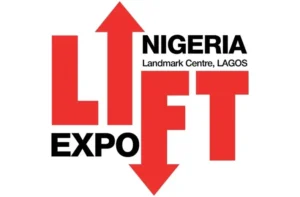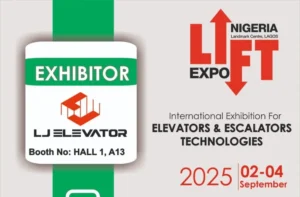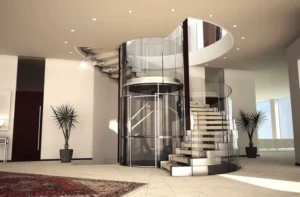When it comes to your home elevator, the paint finish isn’t just about looks—it’s the first line of defense against rust, fading, and wear. Too many companies cut corners with quick sprays or powder coats, leaving you with hidden weak spots and costly touchups down the line. At LJ Elevator, we refuse to settle. We use electrocoating (E-coat) on every elevator, giving you a flawless, lifelong finish that no other home elevator can match.
3 painting methods
Before we dive in, let’s meet the three most common ways to coat steel:
- E-Coat – A water-based bath uses electricity to pull paint into every nook and edge.
- Powder Coating – Dry powder is sprayed on and baked, forming a thick, hard shell.
- Traditional Spray Painting – Wet paint is sprayed on, then dries and hardens with solvent evaporation.
It’s easy to think all paints are the same—until rust starts, colors fade unevenly, or you discover raw metal at the corners. Let us show you why only E coat delivers true, worry free protection.
E–coating:

How it works
- The steel parts dip into a tank of water based paint.
- A gentle electric charge pulls paint molecules deep into every groove, edge, and seam.
- A quick rinse removes excess paint, then the parts bake in an oven to cure.
Why it’s superior
- Total Uniformity: Every surface sees the same coat thickness—even hidden edges. No “bare spots” where corrosion can start.
- Best in Class Corrosion Resistance: Our E coated parts shrug off moisture, salt, and humidity for decades. You get a finish that competes with commercial marine grade coatings.
- Eco Friendly and Clean: Zero solvents and minimal overspray mean far less waste and pollution compared to wet paints.
At LJ Elevator, we invested in a state of the art E coat line and paired it with rigorous quality checks. The result? A finish so tough and uniform it feels like a second skin—one that stays flawless year after year.
Powder coating:

How it works
- Dry paint powder is sprayed onto the metal using electrostatic guns.
- The part moves into an oven, where the powder melts and bonds.
Strong points
- Thick, Durable Finish: Powder coats resist scratches and chips better than thin wet paint films.
- Solvent Free: No VOCs in the air, which is better for your lungs.
Hidden drawbacks
- Edge Gaps: Because powder sprays from the outside, inside corners and hidden seams receive less coverage. Rust finds a way in.
- High Energy Use: Baking requires higher temperatures and longer cycles, raising operating costs (and carbon footprint).
- Touch Ups Are Tricky: Sprayed powder doesn’t match the original coat unless you rebake the part—impractical for spot repairs.
While powder coating is an upgrade over simple spray paint, it still can’t cover every crevice like e-coating does.
Traditional spray painting:

How it works
- A primer and one or more wet paint coats are applied with sprayers.
- Solvents evaporate, leaving the pigment behind.
Advantages
- Endless Color Options: Anything from bold reds to subtle metallics—spray paint can do it all.
- Quick Runs: Ideal for small jobs or custom color changes.
Major weaknesses
- Low Transfer Efficiency: Only about 30–40% of the paint lands on the part; the rest drifts away as waste.
- High VOC Emissions: Strong solvents pollute the air, harm workers, and can even affect indoor air quality in your home.
- Thin, Inconsistent Coats: Corners, weld seams, and bolt holes often get missed or undercoated, creating corrosion hot spots.
In short, traditional spray painting is cheap and flexible—but you pay the price later in rust, fading, and repaint jobs.
Side-by-side comparison
| Feature | E-coating | Powder coating | Traditional spray paint |
| Coverage Uniformity | 100% seams & edges | Good on flat surfaces | Uneven, often misses corners |
| Corrosion Protection | 20+ years, marine grade | 10–15 years | 5–10 years |
| Environmental Impact | Zero solvents, water based | No solvents, high bake | High VOCs, wasteful |
| Maintenance Frequency | Rare recoat needed | Occasional touch ups | Frequent repainting |
| True Cost Over 10 yrs | Lowest total cost | Moderate | Highest (rework + repaint) |
Why LJ Elevator’s E-coating Is Unmatched
- Exclusive Expertise: Many manufacturers talk about E-coat—you’ll even see “we offer e-coating” on their spec sheets. But at LJ Elevator, we’ve refined the process with custom formulas and multiple “mist catch” stages. The result is a finish no one else can replicate.
- Unwavering Quality Checks: Every part goes through thickness gauges, adhesion tests, and salt spray chambers. If it doesn’t meet our gold standard, it gets reprocessed.
- Lifetime Performance: We back our e-coating with a 10 year corrosion warranty, so you can ride, day in and day out, knowing your lift will look and perform like new.
What It Means for You?
- No Rust, Ever: Even in humid basements or coastal homes, your cabin and rails stay corrosion free.
- Brilliant Finish That Lasts: Vibrant colors and smooth textures never dull or peel, preserving your home’s style.
- Lower Total Cost of Ownership: Spend less on service calls and repainting—and more time enjoying your lift.
Most elevator makers rely on powder or spray because it’s cheaper short term. We choose E coat because your peace of mind and long term value matter more.
Conclusion:
When you ride an LJ Elevator, you aren’t just stepping into a lift—you’re stepping into the future of quality and durability. Our e-coating process is the invisible armor that keeps your elevator looking pristine and running smoothly for decades. No corners are cut. No compromises made.
Ready for an elevator finish that truly lasts? Contact LJ Elevator today to learn more about our exclusive e-coating process and how it protects your family and your investment. Let’s build something that stands the test of time—together.





